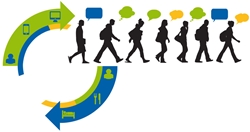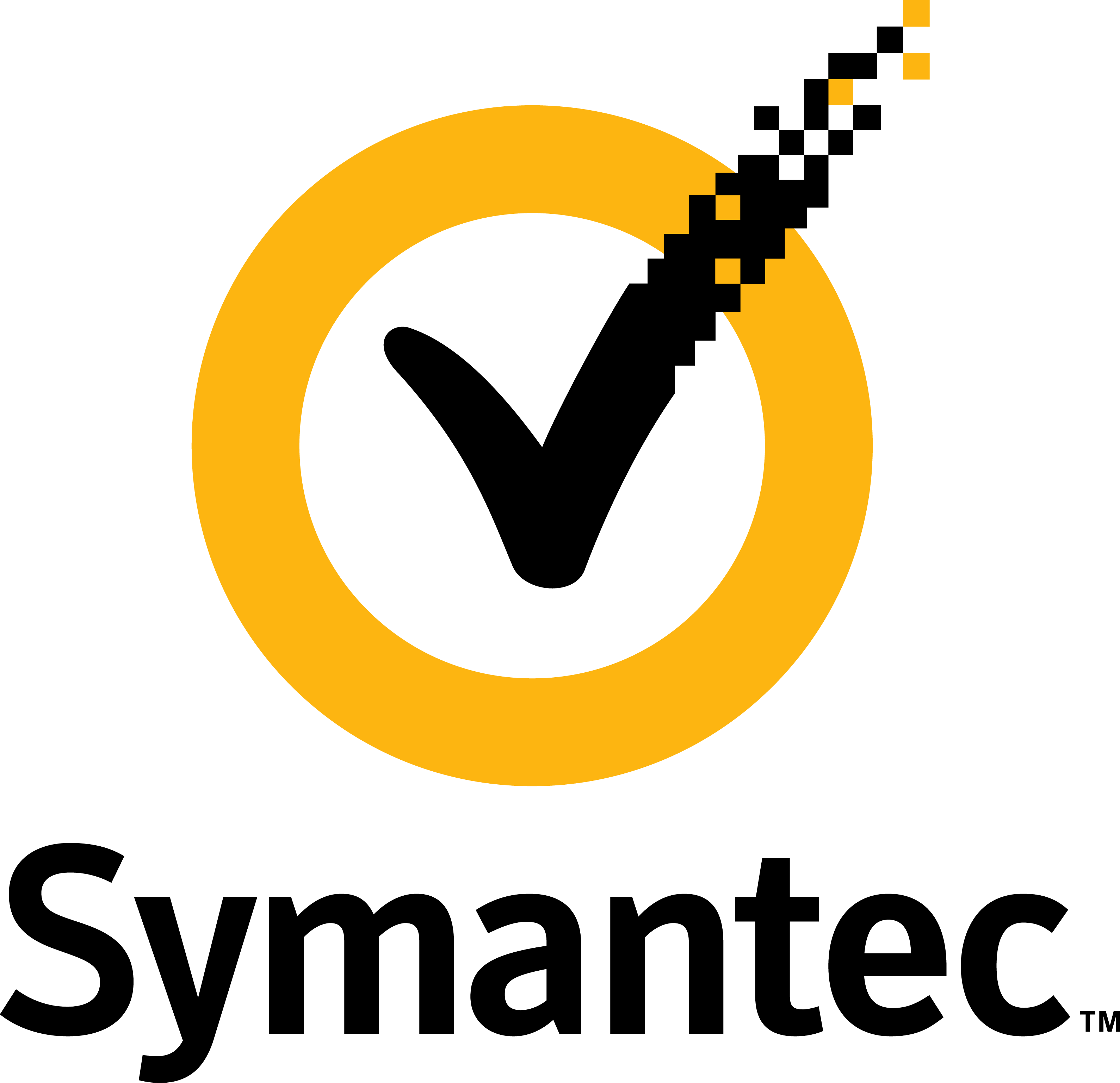is Symantec’s Vice President of Worldwide Field Marketing responsible for driving new business growth and customer retention through the partner eco-system and sales channels across all customer segments and verticals. She brings more than over 20 years of Go-To-Market, Channel and Sales expertise in IT security and infrastructure solutions targeting Enterprise and SMB markets developing and selling with partners from MaaS360/IBM, McAfee, Websense, IronKey and Computer Associates. She has been involved in numerous successful mergers and acquisitions and product launches and was recognized as one of the top 100 Women in the Channel in 2010-2014, and Channel Chief in 2011 & 2012 by CRN.
Can you give us a little background on Symantec?
Symantec provides security, storage and systems management solutions to consumers, small businesses and large organizations worldwide to help them secure and manage their information-driven world against more risks at more points, completely and efficiently.
What are some of the big challenges that you’re facing in 2015 and what are the strategies you’re taking to address those challenges?
With the separation of Symantec into two independent companies focusing on Storage Management and Information Security, our newly formed teams are coming together to focus on the new Symantec unified security solution strategy and how we go to market. My team is responsible for creating and executing programs working closely with field sales and partners to increase pipeline growth across all 3 geographies – the Americas, EMEA and APJ. We are tightly aligned with a sales coverage model and our success is largely due to this alignment approach. We have a strong, collaborative business partnership between geo-marketing and sales, and we include each other in the planning process.
We also have fantastic strategic partners like TechTarget who understands our business and builds programs with our teams to achieve our marketing goals. In addition to working with outside partners, we work closely with the other key functions in marketing such as branding, digital advertising, campaigns, public relations and marketing operations. My advice to other marketers is get things to a point where you feel good about it, be nimble and flexible and execute quickly. Usually the winner is the first to market and if the program does not achieve your anticipated results, bring it back to the core team to do a quick root cause analysis, make some tweaks and execute again. Activity drives results.
How are you building out strategies so you know that they are going to be impactful for the folks that you’re working with?
Companies today will not survive being stand-alone, which means selling and marketing your own products, through your own ways, through inside sales, or through e-commerce. While you may survive, you’re not going to grow fast. A lot of companies scale their growth really fast through the power of the partner ecosystem. The key is to make sure you understand your customer problem, the optimum route to market for the solutions that will solve the problem, and message to the persona at the customer and partner levels. Design campaigns and programs to support that effort, and demonstrate the value proposition to your partners in how they can grow their business with your solutions or combining with other solutions they already have an investment with.
Can you talk about marketing and sales alignment and how those teams work together?
Alignment between sales and marketing must start at the top. The Sales Executive and Marketing Executive must have shared goals and then everything should cascade down from there. From a Marketing standpoint, add value in the business planning process. Ask questions to better understand the business – what markets are we targeting, what are the sales targets (new business, renewal business), key routes-to-market, competitive landscape, etc. From this, the team should agree on no more than three priorities — the power of three is very important. For example, one might be the messaging platform and then the three big pillars that support your proof points.
Once we agree on the three big sales plays, we should have target sales numbers attached to them. Each Geo may differ by customer segmentation and market adoption. That’s why marketing alignment with sales is critical. They have to see the market nuances, the solutions to address those challenges and you also need to share that perspective with key partners to get feedback. Partners provide validation and are a great source of feedback and competitive knowledge. It’s important to include your partners in the planning phases and listen to their feedback. We take that intelligence and work closely with all of the different functions within marketing, such as solutions marketing, product and field marketing, as well as with sales and partners to develop what those campaigns look like.
You are a big proponent of optimizing growth through customer journeys. How do you go about building a customer journey with your team?
The culture we’re building at Symantec is one of being ‘market led’. We’re able to inform our sales audience, channel sales audience, partners, principals, and partner sales audience of what is going on in the marketplace. That means as marketers, we see the trends, market movers, use case scenarios, and customer problems. We’re here to educate you how you can leverage all that and provide value to your customers.
We also have relationships with third party analysts, which offers a different and valuable type of insight. When we look at the intelligence offered across all of the analysts, there isn’t one that had a model in terms of knowing and understanding our business. So we needed to create our own customer journey based on input across all the different third parties.
 We started a year and a half ago and came up with our own customer journey mapping. It took a lot of internal selling but has clearly made Symantec different in the marketplace in a lot of ways. Once again, we knew we could not be successful with all this as a stand-alone. We needed to use technology data to help at every stage of this.
We started a year and a half ago and came up with our own customer journey mapping. It took a lot of internal selling but has clearly made Symantec different in the marketplace in a lot of ways. Once again, we knew we could not be successful with all this as a stand-alone. We needed to use technology data to help at every stage of this.
What changes have you observed in how the buying process has evolved over the past few years?
Today, the buyer is in control more than ever before. It started five or so years ago. Buyers, (like most of us as consumers) want instant gratification and an instant digital connection. They know what they want and know where to go online to search and find it. We still leverage recommendations made by our peers and/or friends.
Today’s statistics indicate buyers are 60 – 75% along in knowing what they want before they pick up a phone and contact a partner or a vendor sales rep. Given that, the other important thing is to have content readily available during that shorter buying cycle. For example ROI data, business justification, and white papers can help customers make their decisions. And hopefully that drives them to make a decision to buy from you.
What advice do you have once you have built out those journeys as it relates to the customer user experience?
The point is to make it easy for the customer to try out what you have to offer. It’s all about user experience at this point. Don’t make it complex or lengthy or something that has to go to legal to sign-off on. Instead, make it easy and straightforward to try and then buy. For example, if you’re offering a cloud solution, it should be really easy to transition from trial phase to a full production license. So if a buyer decides to buy in two weeks, they don’t have to re-install again, and can be up and running in minutes to their Enterprise.
What about what happens after the sale?
Once you get the order, customer care kicks in. Partners, too, need to get involved at this point. If you have a separate sales team that focuses on renewals versus new business, which we do at Symantec, this is where they get involved. Understand the buyer journey by your key customer lines and figure out the appropriate time to inject the next conversation. This is where we utilize our marketing automation tool that integrates with our CRM system, Salesforce. We have an entire team that is building up the end-to-end program for the demand center, which all the geos are a customer of. Customer loyalty is an ongoing process.
Since I know you like to work in three’s, what are the top three things you look for when working with a Media Partner to help you reach your marketing goals and objectives?
A media partner who:
- Understands our business, our markets and competitive landscape
- Collaborates with our teams globally to create a comprehensive marketing plan to achieve our sales goals
- Is pro-active in looking after how our programs are executing and makes recommendations for program improvement
Most importantly, we want a media partner who is considered our business partner with shared rewards and risks.




